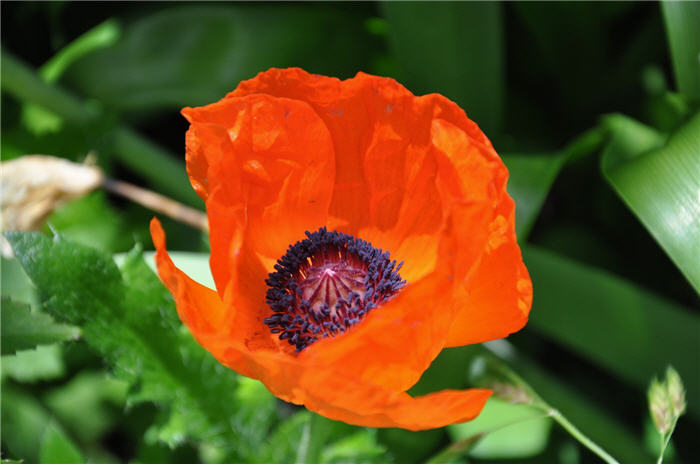| Botanical Name: Papaver orientale | |
| Common Name: Oriental Poppy |

-
Anatomy
-
Culture
-
Design
Plant Type
Perennial
Height Range
1-3'
Flower Color
Orange, Pink, Red, White
Flower Season
Spring, Summer
Leaf Color
Green, Grey Green
Bark Color
n/a
Fruit Color
n/a
Fruit Season
n/a
Sun
Full
Water
Low, Medium
Growth Rate
Moderate
Soil Type
Sandy, Clay, Loam, Rocky, Unparticular
Soil Condition
Average, Rich, Well-drained, Dry
Soil pH
Neutral
Adverse Factors
n/a
Design Styles
English Cottage, Mediterranean, Ranch
Accenting Features
Showy Flowers
Seasonal Interest
Spring, Summer
Location Uses
Entry, Perennial Border
Special Uses
Mass Planting, Naturalizing, Small Spaces
Attracts Wildlife
n/a
Information by: Stephanie Duer
Photographer: Janet Hunter
Photographer: Janet Hunter
-
Description
-
Notes
Oriental poppies are great late spring perennials, with big, papery flowers in both bold and pastel hues. The flowers are borne singularly on tall stems held well above clumps of basal foliage that has long, deeply lobed, hairy leaves of bright to dull green. The clumps are 8 to 12 inches tall and the flowers may stand to 20 to 30 inches. The flowers emerge from large buds that droop downward, and after blooming, are followed by decorative seed heads. The foliage tends to go dormant mid summer, so plant poppies where they will be hidden by later perennials, such as baby's breath, bearded iris, and agastaache. They also pair well with low-water annuals such as nicotiana and cosmos.
Grow in well drained, average to dry soil in full sun. They do well in lean, poor soils. Though deadheading will extend the bloom, the seed heads are also decorative and have ornamental value. There are many named cultivars available. Though appreciative of regular irrigation when blooming, oriental poppies are very drought tolerant, and do not need more than periodic watering once flowering has stopped and the plant has gone dormant.